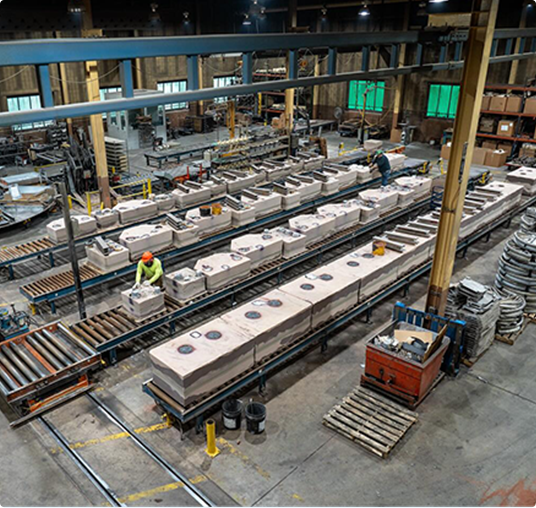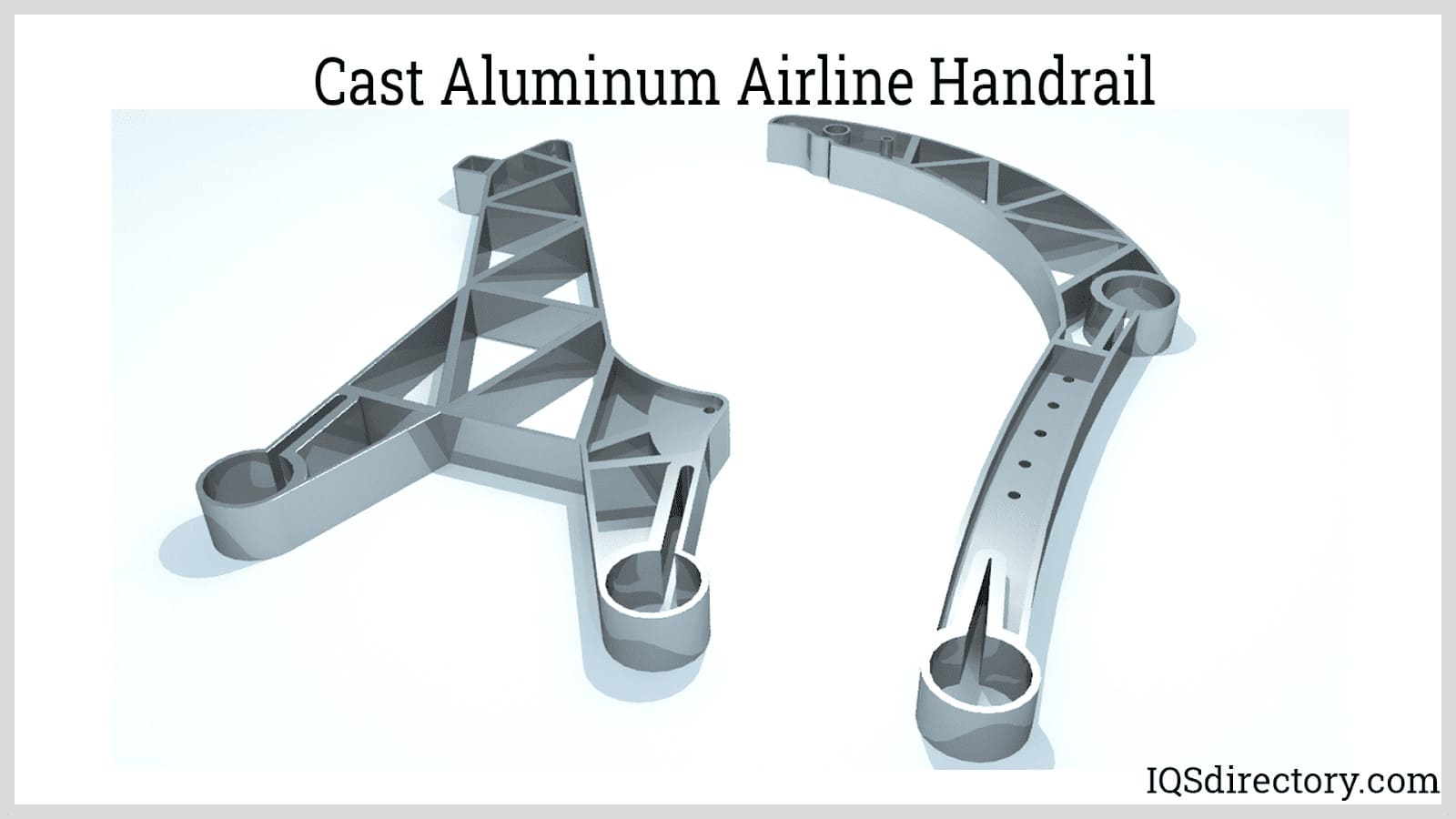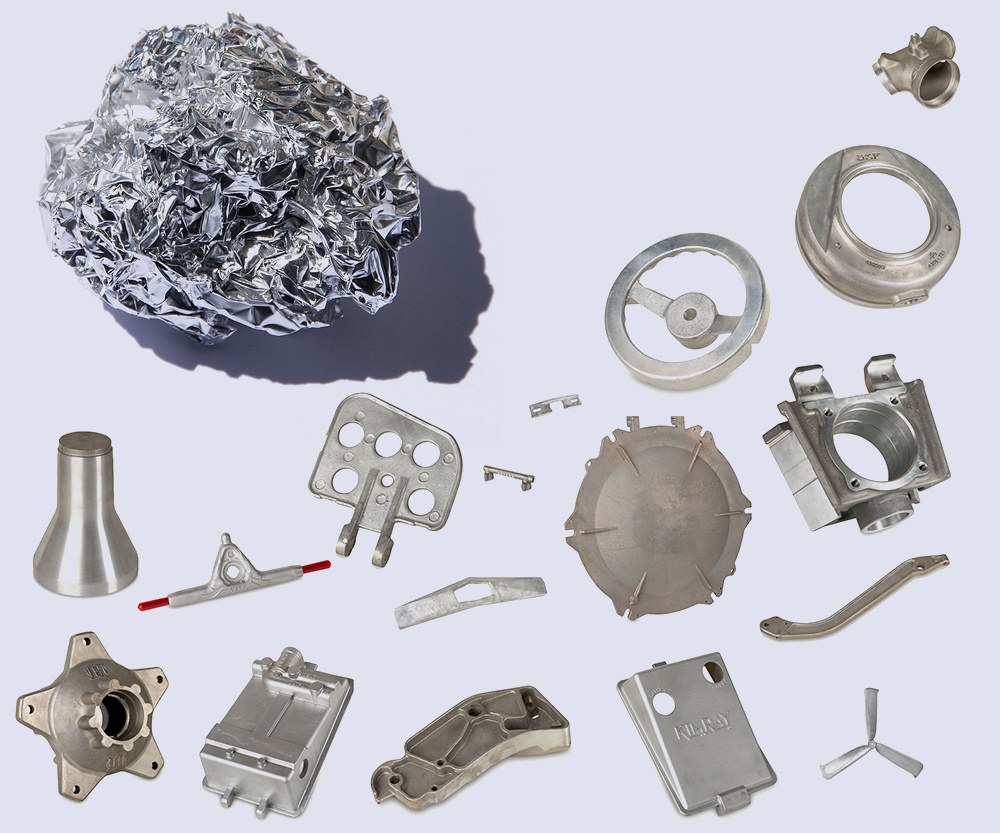How Aluminum Castings are repurposed for efficiency
Technologies and Trends Shaping the Future of Aluminum Casting in Design Solutions
Developments in aluminum casting are changing design services. Advances in casting strategies, especially high-pressure die casting and financial investment casting, are boosting precision and style adaptability. Automation and wise technologies play an essential role in maximizing manufacturing efficiency. Sustainability is coming to be a top priority, with environment-friendly materials acquiring grip. As these fads evolve, they will redefine market standards and customer assumptions. What ramifications might these modifications hold for the future of manufacturing?
Advances in Casting Strategies

The Duty of Automation in Aluminum Casting
Automation plays a critical function in boosting the aluminum casting procedure by greatly enhancing manufacturing performance. By integrating sophisticated modern technologies, producers can improve procedures and decrease cycle times (Aluminum Castings). In addition, automation contributes to enhanced top quality control, ensuring constant product standards and lessening issues
Increased Production Performance
Reinventing the aluminum casting market, automation substantially boosts manufacturing performance. Automated systems improve various phases of the casting procedure, minimizing manual labor and minimizing human mistake. High-speed robotic arms can specifically manage mold and mildews, ensuring consistent and rapid production cycles. Furthermore, advanced computer system algorithms maximize the organizing and management of sources, causing reduced downtime and improved operations. Automation likewise permits for real-time surveillance and modifications, enabling manufacturers to respond quickly to any functional issues. By applying automated procedures, business can increase outcome while preserving cost-effectiveness. Ultimately, this change in the direction of automation not only improves efficiency however also placements manufacturers to satisfy the expanding demands of the market with higher dexterity and sustainability.
Improved Quality Assurance
A considerable advancement in aluminum casting is the integration of computerized quality assurance systems, which improve product consistency and decrease issues. These systems utilize sophisticated sensing units and data analytics to monitor the casting process in real-time, permitting prompt modifications based on quality metrics. Automation reduces human mistake and increases the dependability of evaluations, ensuring that each element satisfies strict specifications. By applying artificial intelligence algorithms, manufacturers can forecast potential failings and proactively address issues prior to they rise. This not only boosts the overall quality of aluminum products however likewise enhances the manufacturing process, causing boosted effectiveness and expense savings. Ultimately, enhanced high quality control via automation represents a transformative action in the aluminum casting industry.
Smart Technologies and Market 4.0 Integration
The integration of smart technologies and Market 4.0 in aluminum casting is revolutionizing manufacturing processes. With the Net of Things (IoT) improving real-time surveillance, automation and robotics are simplifying operations, while information analytics provide vital understandings for optimization. These developments are setting brand-new standards for effectiveness and accuracy in the industry.
IoT in Casting Procedures
How can the assimilation of IoT innovations improve the performance and accuracy of aluminum casting procedures? The application of IoT in casting enables real-time surveillance of temperature level, stress, and various other essential parameters, guaranteeing ideal conditions throughout production. Sensors linked to the cloud can accumulate and evaluate information, helping with predictive upkeep and lowering downtime. By utilizing smart algorithms, manufacturers can recognize anomalies that could bring about problems, therefore improving quality assurance. Additionally, IoT modern technologies allow seamless communication in between devices, allowing for worked with operations and resource optimization. This interconnectedness not just streamlines operations but also enhances decision-making capacities, eventually causing considerable expense financial savings and greater productivity in aluminum casting operations.
Automation and Robotics Advancements
While the integration of automation and robotics is changing the aluminum casting sector, improvements in smart modern technologies and Market 4.0 are driving extraordinary efficiency and precision. Automated systems currently manage repeated jobs, reducing human error and boosting manufacturing rates. Robotics in casting procedures enables for improved handling of intricate shapes and fragile elements, ensuring consistent high quality. Furthermore, using collective robotics, or cobots, improves employee security by taking control of dangerous procedures. Smart modern technologies facilitate real-time tracking and modifications, enhancing assembly line without hands-on treatment. As these technologies evolve, they develop a much more active and responsive manufacturing atmosphere, making it possible for business to adjust swiftly to market needs and boost overall competitiveness in the aluminum casting sector.
Information Analytics for Optimization
As automation and robotics remain to reshape the aluminum casting industry, the unification of data analytics emerges as an essential component of Smart Technologies and Sector 4.0. By leveraging huge datasets produced throughout the manufacturing process, manufacturers can determine ineffectiveness, enhance workflows, and enhance item quality. Advanced formulas and equipment learning devices enable predictive upkeep, minimizing downtime and minimizing operational costs. Additionally, real-time data analysis supports notified decision-making, enabling dexterous actions to market demands. The assimilation of information analytics not only enhances production processes yet additionally cultivates advancement in item development. As the sector evolves, accepting data-driven techniques will certainly be necessary for firms intending to keep competitive advantages and attain lasting growth in the aluminum casting field.
Additive Manufacturing in Aluminum Solutions

Additive production accelerates the prototyping procedure, enabling quick version and design optimization. It helps with the Full Article personalization of parts, catering to details client needs without the restrictions of traditional casting approaches. The integration of sophisticated software devices help in imitating and fine-tuning styles before manufacturing, making certain effectiveness and accuracy. As web the aluminum casting landscape develops, additive manufacturing stands out as a transformative force, promoting innovation and opening new methods for engineering remedies across numerous industries.
Lasting Practices and Recycling Initiatives
Sustainable practices and recycling initiatives are ending up being significantly important in the aluminum casting sector, provided the expanding focus on environmental obligation. Suppliers are taking on techniques that decrease waste and power intake, consequently decreasing their carbon footprint. One noticeable fad is the use of recycled aluminum, which calls for substantially much less energy to process contrasted to key aluminum production. This shift not just saves natural deposits however additionally reduces greenhouse gas emissions.
Furthermore, cutting-edge casting methods, such as die-casting and sand casting, are being enhanced for sustainability, enhancing product effectiveness. Firms are additionally purchasing closed-loop systems that promote the reprocessing of scrap steel produced throughout manufacturing. Partnerships with recycling companies are cultivating a more effective recycling infrastructure, ensuring that aluminum items have a longer lifecycle. Jointly, these efforts emphasize the industry's commitment to sustainability while fulfilling the expanding need for ecologically responsible services in design applications.
Lightweight Materials for Boosted Efficiency
The aluminum casting market is not only concentrating on sustainability however also on the advancement of lightweight products that enhance performance across different applications. These products are increasingly vital in industries such as automotive, aerospace, and customer electronics, where minimizing weight can bring about boosted fuel efficiency and total performance. Advanced aluminum alloys and composites are being engineered to achieve superior strength-to-weight ratios, making it possible for makers to produce elements that are both robust and light-weight.
In addition, advancements in casting techniques, such as high-pressure die casting and financial investment casting, facilitate the production of complex designs while decreasing material waste. This shift in the direction of lightweight products is not just transforming product styles however also driving competitive benefits in efficiency and efficiency. As sectors continue to prioritize weight decrease, the need for advanced aluminum casting solutions will likely expand, placing light-weight materials as a foundation of future design advancements.
Satisfying the Needs of Eco-Conscious Consumers
As customers significantly prioritize eco-friendliness in their investing in decisions, the aluminum casting sector is adapting to satisfy these advancing demands. Makers are currently concentrating on lasting techniques, such as utilizing recycled aluminum, which significantly decreases energy usage and greenhouse gas exhausts compared to primary aluminum manufacturing. Aluminum Castings. This shift not only preserves natural deposits but likewise appeals to eco aware consumers
Additionally, cutting-edge casting methods are being created to lessen waste and enhance energy effectiveness throughout production. Firms are additionally exploring naturally degradable layers and eco-friendly ingredients to even more lower their ecological effect.
In addition, openness in supply chains is ending up being vital, with brand names offering info about their sourcing and producing processes. By lining up with the values of eco-conscious customers, the aluminum casting sector is positioning itself for a lasting future, showing that ecological duty can exist together with high-quality design services.
Regularly Asked Questions
What Industries Largely Use Aluminum Casting Solutions?
Aluminum casting options are largely made use of in vehicle, aerospace, and durable goods industries. These industries take advantage of aluminum's lightweight homes, rust resistance, and versatility, making it an excellent option for different applications and elements.
Just How Does Aluminum Casting Contrast to Other Metal Casting Approaches?
Aluminum casting deals light-weight properties, excellent deterioration resistance, and great thermal conductivity compared to other metal casting techniques. Aluminum Castings. Its flexibility and efficiency make it a recommended selection in different applications, particularly in automotive and aerospace sectors
What Accreditations Are Essential for Aluminum Casting Manufacturers?

What Prevail Flaws in Aluminum Casting and Their Reasons?
Common problems in aluminum casting consist of porosity, shrinking, and surface area imperfections. These problems frequently develop from inappropriate pouring methods, poor temperature level control, and contamination, affecting the structural stability and aesthetic top quality of the end product.
Exactly How Can I Select the Right Aluminum Alloy for My Task?
Selecting the right aluminum alloy includes taking into consideration variables such as mechanical properties, rust resistance, thermal conductivity, and application requirements. Reviewing these requirements aids assure peak efficiency and long life for the details task concerned.